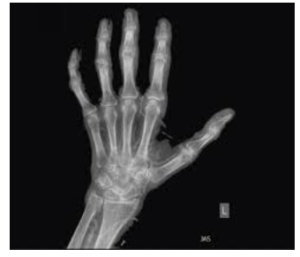By Dr. Arun Kumar
INTRODUCTION:
Crystal arthropathy, also known as crystalline arthritis, is a group of joint disorders caused by the deposition of crystals within and around joints. These crystals can form due to various factors, leading to inflammation, pain, and damage to the joint cartilage and surrounding tissues.
TYPES:
Gout: The most common type, caused by the deposition of monosodium urate crystals, often due to high uric acid levels in the blood.
Calcium pyrophosphate deposition disease (CPPD): Caused by the deposition of calcium pyrophosphate dihydrate (CPPD) crystals, affecting older adults more frequently.
Hydroxyapatite crystal deposition disease: Less common, caused by the deposition of hydroxyapatite crystals, often associated with joint replacements or underlying medical conditions.
CAUSES AND RISK FACTORS:
Gout: High uric acid levels, obesity, genetics, certain medications, dietary factors, and medical conditions like kidney disease can contribute.
CPPD: Age, genetics, joint injury, and certain medical conditions may play a role.
Other types: Varying causes depending on the specific crystal type
SYMPTOMS:
• Sudden or gradual onset of severe joint pain, often described as sharp, burning, or throbbing.
• Swelling, redness, warmth, and tenderness in the affected joint.
• Limited range of motion in the joint.
• In severe cases, joint deformities and complications like gouty tophi (deposits under the skin) can occur.
TREATMENT:
Aims to relieve pain, reduce inflammation, and prevent future attacks.
Medications: Depending on the type of crystal arthropathy, various medications like pain relievers, anti-inflammatory drugs, urate-lowering drugs (for gout), and specific medications for CPPD are used.
Joint injections: Corticosteroids or other medications can be injected directly into the affected joint for localized pain relief.
Lifestyle modifications: Dietary changes, weight management, and avoiding triggers are crucial for gout management.
SURGERY:
In rare cases, joint replacement surgery might be considered for severe joint damage.
OCCUPATIONAL THERAPY INTERVENTION:
FUNCTIONAL IMPROVEMENT:
Activity modification and adaptation: Identifying and modifying activities that aggravate symptoms to prevent pain and joint damage. Learning safer alternatives and using adaptive equipment to simplify tasks and reduce strain on affected joints.
Assistive devices: Recommending and training on the use of assistive devices like canes, walkers, or grab bars to improve mobility and safety during daily activities.
Joint protection techniques: Training in proper body mechanics and joint protection strategies to minimize stress on affected joints and prevent future flare-ups.
RETURNING TO WORK/ACTIVITIES:
Workstation/home environment evaluation: Assessing your work or home environment and recommending ergonomic modifications to minimize stress on joints and ensure safe task performance.
Return-to-work plan: Collaborating with you, your employer, and other healthcare professionals to develop a safe and gradual plan for returning to work, addressing any necessary workplace adaptations.
Leisure activity adaptations: Exploring alternative ways to participate in hobbies and leisure activities that minimize joint strain and maximize enjoyment.
Leave a Reply